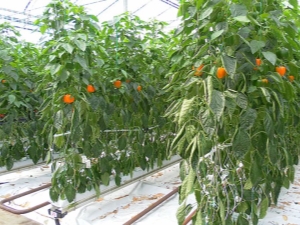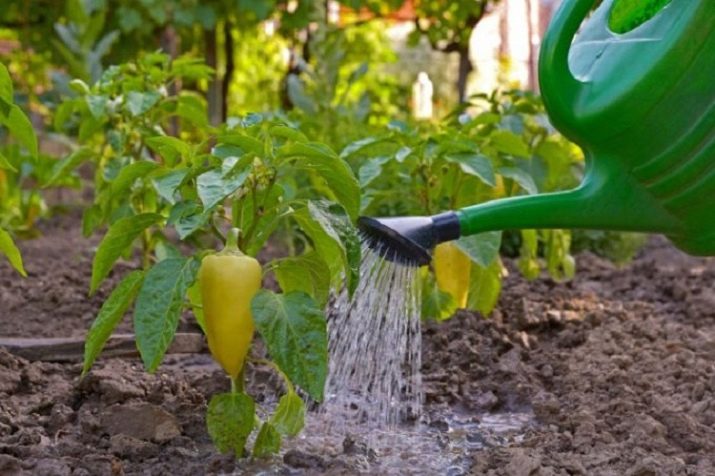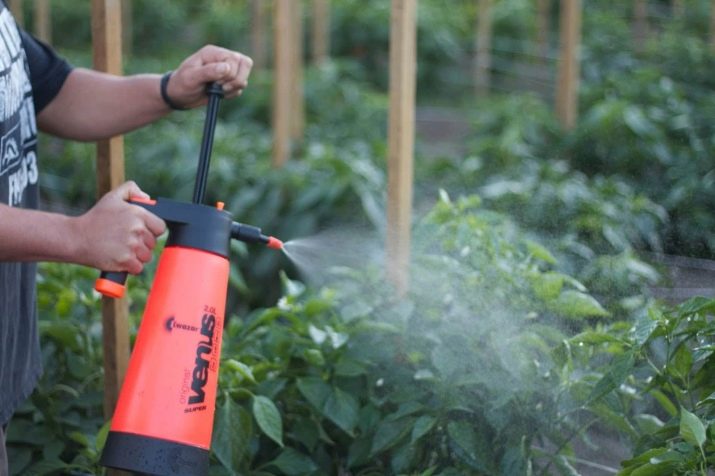Why does the pepper turn yellow in the greenhouse and what to do?

Novice gardeners think that pepper does not need additional protection, as it is less picky and practically not subject to diseases. This is a misconception.In fact, yellow foliage is the main indicator that plants have a problem. In closed greenhouses, pepper suffers most from care errors, so special attention should be paid to it.
The reasons
There are several reasons due to which the pepper turns yellow. For example, it can be bad soil, in which there is not enough moisture or nutrients. Among the main factors:
- lack of sufficient irrigation;
- poorly fertilized soil;
- high humidity;
- lack of sufficient light;
- the presence of toxins;
- influence of diseases or pests.
Agrotechnics learns to comply with the rules of crop rotation. Not all cultures are perfect for the neighborhood with pepper. Especially it is not necessary to plant it in the ground, where a plant has previously grown, releasing toxins into the soil.
Intertwining roots with neighbors is also not beneficial - the system that provides food for the whole plant suffers. Bushes begin to fight for a place, displacing each other (hence the need to maintain distance). In addition, spider mites, phytophthora, mosaic and other unpleasant diseases are the first reason for yellowing on the foliage.
But it concerns open ground. It would seem that in the greenhouse the pepper is completely protected from negative factors, but in fact this is the biggest misconception. To change the color of the foliage results:
- poor soil composition;
- non-compliance with the temperature regime;
- infections in the greenhouse;
- the appearance of slugs, bear and other pests.
The optimum humidity in the greenhouse for this crop should be 75%. If it is not enough, then yellowing will not take long. With regard to indicators on the thermometer, even a slight decrease in air temperature leads to the fact that the plant is under stress. In addition, if the watering is wrong, the gardener will soon face the problem of the appearance of yellow leaves.
This culture is 90% water. As soon as moisture begins to be missed, she will react sharply to this, instantly shedding leaves to support the flowers and fruits. It is best to use inside the greenhouse (and even in open beds) automated drip irrigation, which will be regulated in accordance with the exposed scheme. So and overwetting does not happen, and the vegetable will receive the required amount of moisture.
Greenhouse space must be aired, as it happens naturally in open beds. Leaving doors and windows open at night is not worth it, as the temperature is disturbed, which negatively affects the plants inside.
If you plant at the same place, the plants can get sick. A gardener should always be aware of crop rotation if he wants to get a quality crop every year. Peppers can not grow on acidic soil - this is also one of the reasons why the planting begins to turn yellow.
Not always a strong root system is beneficial, since its growth leads to the fact that the foliage changes its shade due to the lack of nutrition, it falls off. There is no need to influence the situation in this case - the problem will soon correct itself by itself when the pepper grown in a close container develops enough roots to sit firmly in the ground.
The nature of yellowness says a lot. For example, with a lack of iron, it extends from the center to the edges of the sheet. The appearance of spots of this shade indicates a lack of manganese. If the foliage not only turns yellow, but also grows a curve and falls, it's time to think about top dressing with calcium content.
This vegetable culture does not like drafts and lack of lighting. Under these conditions, yellow tint is guaranteed. Putting pepper in the shade is not worth it.
About the presence of pests says not only the yellowness, but also the leaves twisted around the edges. In this case, it is necessary to urgently process the plant "Fitosporin."
"Phytoplasmosis" not only affects the color of the foliage, but also twists the leaves up with a boat. All affected shoots destroy. If only the tips began to change in color, then the plant is deficient in nutrients. This is usually due to a lack of nitrogen.
First aid
You can save the crop if you act immediately. In the absence of the required amount of moisture, it is enough to replenish it, and in the future not to disturb the regime. Seedlings should be irrigated once in 3 days, if the soil dries quickly, or once in 5 days, if it remains more or less wet.
Particular attention should be paid to fertilizers and fertilizing, since healthy peppers can withstand diseases, and the weak ones start dying quickly. Among the fixed assets:
- Kemira;
- "Aqua";
- "Nitrophoska";
- ash.
On the packaging there is a correct ratio of powder to liquid, in which it is diluted. Violating the proportions is prohibited, because the drug can harm the plant, and not benefit. If the lower leaves fall, and spots appear, then it can be pests. Then the tool is selected individually, and processing is carried out in accordance with the schedule established by the manufacturer.
Prevention
Preventive measures will allow in the future (even at the stage of ripening of the crop) to avoid many problems. Any actions should be aimed at protecting plants, eliminating the causes of diseases in the early stages. Among the main preventive actions:
- disinfection / preparation of the soil for planting;
- use only healthy plants and seeds;
- the purchase of varieties that are particularly resistant to diseases;
- spraying bushes.
Decontamination requires not only the soil and seeds, but also the greenhouse itself, since spores also settle on its walls.
The best prevention of diseases / pests is regular personal inspection of each plant.
It is worth using chemical agents for spraying only when biological agents are ineffective or all the bushes are affected.
Mistakes gardeners
There are the most common mistakes gardeners, which lead to the fact that the leaves of pepper begin to turn yellow:
- when planting in a greenhouse or growing seedlings on a window, the plants are not provided with sufficient amount of daylight, the source of which can be lamps;
- non-compliance with the requirements for humidity of the room, soil;
- too high or low air temperature or their sudden drops;
- watering is carried out with cold water;
- plants were not treated for pests and diseases.
Knowledge and understanding of the causes of yellowing of leaves on pepper gives gardeners the opportunity to correct the situation in time to get a quality crop as a result. Compliance with the simplest rules will reduce labor costs in the future. Even a beginning vegetable grower can easily and easily put into practice the rules of agrotechnology. The main thing is to follow them and not to postpone care of plants for later.
Do not forget that watering, compliance with temperature, spraying, high-quality lighting play a leading role in the cultivation of pepper. Planted in the greenhouse plants require special attention - you will need to make nutrient solutions for feeding.
For errors when growing peppers, see the following video.



























